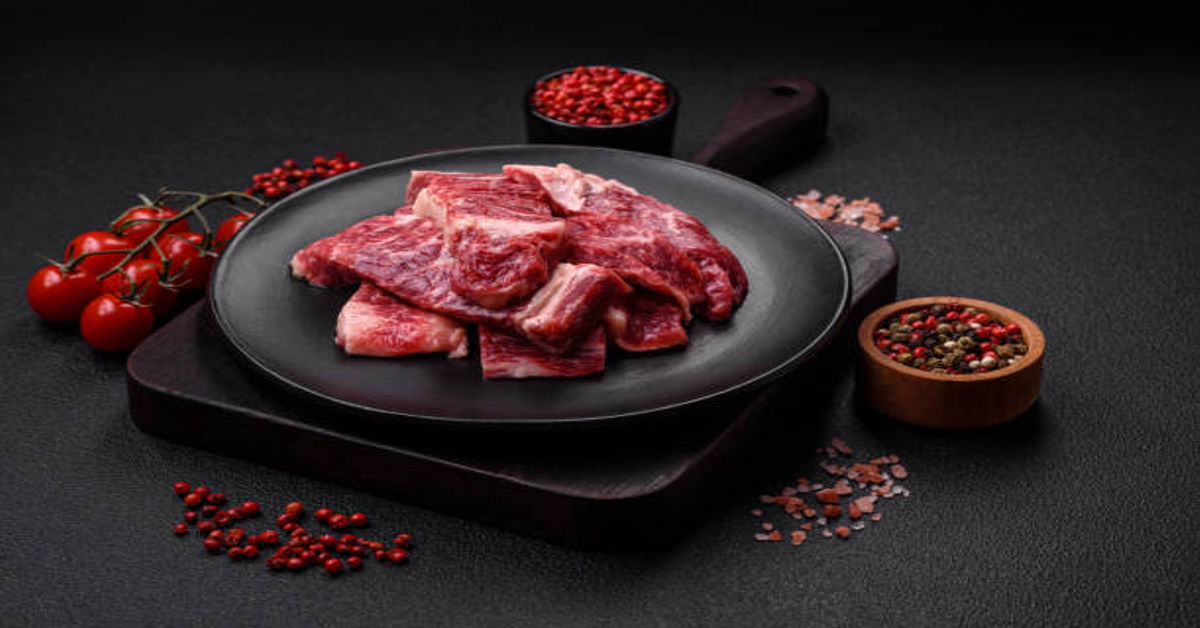Wagyu beef tallow is an increasingly popular ingredient among chefs, home cooks, and health-conscious individuals due to its rich flavor, unique fatty acid composition, and versatility in cooking. Unlike conventional animal fats, Wagyu tallow comes from Wagyu cattle, a breed celebrated for its intense marbling, high-quality meat, and extraordinary tenderness. Derived from the rendered fat of these cattle, Wagyu beef tallow is prized not only for its flavor but also for its potential health benefits and stability at high cooking temperatures. This article will provide a comprehensive exploration of Wagyu beef tallow, covering its nutritional value, culinary uses, health considerations, storage methods, and practical applications in everyday cooking.
1. What is Wagyu Beef Tallow?
Wagyu beef tallow is the rendered fat obtained from Wagyu cattle, a Japanese breed renowned for producing meat with exceptionally high marbling. This marbling, which refers to the intramuscular fat, is responsible for the meat’s buttery texture and deep, rich flavor. When this fat is rendered down through slow heating, it transforms into a clean, golden fat known as Wagyu tallow. Unlike standard beef fat, Wagyu tallow has a unique fatty acid profile, including higher percentages of monounsaturated fats such as oleic acid, which contribute to both taste and potential health benefits.
Rendering Wagyu fat is a traditional culinary process that involves heating the fat slowly to melt it, then straining out any solid impurities. The result is a shelf-stable fat that can be used in cooking, baking, frying, or even as a natural moisturizer. Unlike some oils that degrade at high temperatures, Wagyu beef tallow is heat-stable, making it ideal for searing, sautéing, and roasting.
2. Nutritional Profile of Wagyu Beef Tallow
Understanding the nutritional content of Wagyu beef tallow is essential for appreciating its potential health benefits. While it is high in fat, the composition of these fats differs significantly from conventional beef fat.
| Nutrient | Amount per 100g | Notes |
|---|---|---|
| Total Fat | 99 g | High-calorie source; primarily monounsaturated and saturated fats. |
| Saturated Fat | 41 g | Provides structure to the fat; stable at high heat. |
| Monounsaturated Fat | 55 g | Oleic acid-rich; associated with heart health benefits. |
| Polyunsaturated Fat | 4 g | Essential fatty acids including linoleic and alpha-linolenic acid. |
| Cholesterol | 90 mg | Natural component of animal fats; moderate intake advised. |
| Vitamin E | 2.0 mg | Antioxidant properties; protects cells from oxidative stress. |
| Vitamin K2 | 20 mcg | Supports bone and cardiovascular health. |
| Calories | 900 kcal | Highly caloric; small amounts go a long way in cooking. |
One of the most notable aspects of Wagyu beef tallow is its high oleic acid content, which can make up to 55% of the total fat. Oleic acid is a monounsaturated fat that has been linked in studies to improved cardiovascular health and anti-inflammatory properties. Compared to other animal fats, Wagyu tallow is less prone to oxidizing at high temperatures, meaning it maintains its nutritional integrity even when used for frying or roasting.
3. Health Benefits of Wagyu Beef Tallow
While all animal fats should be consumed in moderation, Wagyu beef tallow offers a few unique advantages over conventional beef fat or vegetable oils:
- Heart Health: The high monounsaturated fat content can help support healthy cholesterol levels by increasing HDL (good cholesterol) while potentially reducing LDL (bad cholesterol).
- Anti-Inflammatory Effects: Oleic acid and certain antioxidants present in Wagyu tallow may help reduce inflammation in the body.
- Stable Cooking Fat: Its high smoke point makes it ideal for high-temperature cooking without producing harmful free radicals.
- Energy-Dense Source: Being a concentrated fat, it provides sustained energy, which is valuable in ketogenic or low-carb diets.
- Rich in Fat-Soluble Vitamins: Vitamins E and K2 present in tallow support cellular health, immunity, and bone strength.
However, it is important to note that Wagyu beef tallow is still high in calories and saturated fat. Overconsumption can contribute to weight gain and cardiovascular risk in susceptible individuals. Moderation and balance with other nutrient-dense foods are key.
4. Culinary Uses of Wagyu Beef Tallow
Wagyu beef tallow is prized for its rich flavor and cooking versatility. Its high smoke point of approximately 400–420°F (204–216°C) allows it to be used in a variety of cooking techniques:
| Cooking Method | Description |
|---|---|
| Searing | Adds a rich, buttery flavor to steaks, pork chops, or vegetables. |
| Roasting | Perfect for roasting meats or root vegetables to enhance caramelization. |
| Frying | Ideal for deep-frying due to its stability at high heat. |
| Baking | Can replace butter or oils in savory pies, pastries, and breads. |
| Flavor Enhancer | A spoonful can be used to enrich sauces, gravies, or soups. |
One of the most celebrated uses is in pan-searing steaks, where a small amount of Wagyu tallow imparts a deep, nutty flavor and golden crust. Home cooks also use it to roast vegetables, where the fat helps achieve a caramelized exterior without the risk of burning like some vegetable oils.
5. Rendering Wagyu Beef Tallow at Home
Rendering Wagyu beef tallow is a simple process, though it requires attention to detail to ensure a clean, high-quality end product.
Step-by-Step Guide:
- Collect Fat: Trim excess fat from Wagyu beef, ensuring minimal meat content.
- Cut into Small Pieces: Smaller chunks render faster and more evenly.
- Slow Heat Rendering: Place fat in a heavy saucepan over low heat. Gradually melt to avoid burning.
- Strain: Use a fine mesh strainer or cheesecloth to remove solids.
- Storage: Store in an airtight container in the refrigerator for up to 6 months, or freeze for longer shelf life.
The result is a clean, golden fat with a mild, nutty flavor, ready to be used in both cooking and baking.
6. Comparing Wagyu Beef Tallow with Other Cooking Fats
To understand the unique qualities of Wagyu beef tallow, it helps to compare it with common cooking fats:
| Fat Type | Smoke Point (°F) | Key Characteristics | Best Use |
|---|---|---|---|
| Wagyu Beef Tallow | 400–420 | Rich flavor, high monounsaturated fat | Searing, frying, roasting |
| Standard Beef Tallow | 375–400 | Slightly less stable, more saturated fat | Frying, general cooking |
| Butter | 350 | Adds creamy flavor, lower heat stability | Baking, light sautéing |
| Olive Oil | 375–405 | Heart-healthy monounsaturated fat | Medium-heat cooking, salad dressings |
| Coconut Oil | 350–385 | Medium-chain triglycerides, tropical flavor | Baking, light frying |
From this comparison, it’s clear that Wagyu tallow combines flavor, health benefits, and heat stability better than many other animal fats, making it ideal for gourmet cooking applications.
7. Storage and Shelf Life of Wagyu Beef Tallow
Proper storage of Wagyu tallow is critical to preserve its flavor, texture, and nutritional quality. Because it is a rendered fat, it is naturally shelf-stable, but exposure to light, heat, and air can lead to rancidity over time.
Storage Guidelines:
- Refrigeration: Store in a tightly sealed jar; lasts up to 6 months.
- Freezing: For longer storage, freeze in portions; can last up to 12 months.
- Room Temperature: Can be kept in a cool, dark pantry for a few weeks, though refrigeration is recommended.
To prevent oxidation, always use a clean spoon when scooping and avoid water contamination.
8. Incorporating Wagyu Beef Tallow into Modern Diets
Wagyu beef tallow is compatible with several dietary lifestyles due to its composition and cooking versatility:
- Keto and Low-Carb Diets: Provides energy-dense fat without added carbohydrates.
- Paleo Diets: Fits into whole-food, minimally processed animal fat recommendations.
- Carnivore Diets: Adds flavor and calories from pure animal fat.
- Gourmet Cooking: Enhances the flavor of vegetables, meats, and baked goods.
Its ability to replace less stable fats such as vegetable oils or margarine also makes it an attractive choice for health-conscious cooks seeking natural, nutrient-rich fats.
9. Environmental and Ethical Considerations
High-quality Wagyu beef tallow comes from responsibly raised cattle, often grass-fed or raised with sustainable practices. By using the fat, chefs and home cooks can minimize waste, as the fat that might otherwise be discarded is transformed into a valuable culinary ingredient. Ethical sourcing is critical to ensure that the environmental footprint of Wagyu production is considered, and many suppliers now focus on sustainable and humane practices.
10. Frequently Asked Questions (FAQs)
1. What is Wagyu beef tallow, and how does it differ from regular beef fat?
Wagyu beef tallow is rendered fat from Wagyu cattle, which has a higher monounsaturated fat content and richer flavor than standard beef fat.
2. Can Wagyu beef tallow be used for frying and high-heat cooking?
Yes, it has a high smoke point of 400–420°F, making it stable for frying, roasting, and searing.
3. Is Wagyu beef tallow healthy?
Moderate consumption can provide heart-healthy monounsaturated fats, antioxidants, and fat-soluble vitamins.
4. How should Wagyu tallow be stored?
Refrigerate in an airtight container for up to six months or freeze for up to a year to maintain freshness.
5. Can Wagyu beef tallow be incorporated into diets like keto or paleo?
Yes, it is ideal for ketogenic, low-carb, paleo, or carnivore diets due to its high-quality fat and energy density.









